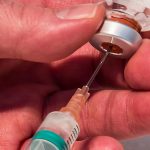3D Printing Medical Device Market to Reach $9.42 Billion by 2030 -Research

Infinium Global Research, a prominent market research firm, has unveiled an extensive report that delves deep into the 3D Printing Medical Device Market. This comprehensive analysis offers insights into market segments and sub-segments on both a global and regional scale. The report provides a thorough examination of the effects of various drivers, restraints, and macro indicators on the 3D printing medical device market over both short and long-term horizons.
The 3D printing medical device market is currently experiencing remarkable growth, propelled by a multitude of factors. These factors include significant advancements in 3D printing technology and the ease with which customized medical products can now be produced. This growth is vividly evident in the production of 3D-printed prosthetics, implants, dental restorations, surgical instruments, and even biological tissues. Notably, over 20 types of implants, including cranial, hip, knee, and spinal implants, have received FDA approval and are now manufactured using various 3D printing technologies.
Several key factors contribute to the expansion of the global 3D printing medical device market. These include continuous improvements in 3D printing technology, enhancements in healthcare infrastructure, and the increasing aging population, all of which are fueling the market’s growth. Furthermore, the presence of FDA guidelines streamlines the approval process for 3D-printed medical devices, making it more accessible for manufacturers to enter the market. On a positive note, recent advancements in 3D printing have led to a reduction in equipment costs while simultaneously offering superior technology and a broader range of engineering materials. The rising demand for organ transplants also presents significant growth opportunities for key players in the global 3D printing medical device market.
Here are the key findings from the report:
1. Remarkable Growth Projection: In 2022, the global 3D printing medical device market was valued at USD 2.49 billion. The report predicts that it will skyrocket to USD 9.42 billion by 2030, driven by a remarkable Compound Annual Growth Rate (CAGR) of 15.82% during the forecast period from 2023 to 2030.
2. Drivers of Market Growth: The market’s growth is powered by technological advancements in 3D printing, enabling the creation of customized medical products such as prosthetics, implants, dental restorations, surgical instruments, and biological tissues. FDA guidelines streamline the approval process for 3D-printed medical devices, easing market entry for manufacturers. Recent technological advances have not only reduced equipment costs but have also improved technology and expanded the range of engineering materials. Additionally, the increasing demand for organ transplants offers significant growth opportunities within the market.
3. Dominant Region: The report highlights that North America is poised to dominate the 3D printing medical device market, thanks to its robust technological infrastructure and a strong emphasis on research and development. The presence of leading industry players and government-funded R&D initiatives creates significant growth opportunities. Asia-Pacific is expected to witness substantial growth due to expanding populations and ongoing research and development efforts. Even in Europe, a mature market for 3D printing medical devices, rapid growth is anticipated, supported by expertise in 3D printing, quality control, and regulatory compliance.
4. Segmental Analysis: The report offers a comprehensive breakdown of the 3D printing medical device market by technology, application, and end-user. Sub-markets include electron beam melting, selective laser melting, photopolymerization, direct metal laser sintering, laminated object manufacturing, and laser beam melting for technology. Application sub-markets encompass surgical guides, medical implants, surgical instruments, and bioengineering. End-user sub-markets include medical and surgical centers, pharmaceutical and biotech companies, and academic institutions.
5. Key Players: The report includes profiles of key companies in the market, such as 3D Systems, Inc., ENVISIONTEC US LLC, Arcam AB (acquired by General Electric), Stratasys, CYFUSE BIOMEDICAL K.K., Organovo Holdings Inc., EOS GmbH, FABRX LTD., Materialise, and Concept Laser GmbH (acquired by General Electric).
The future of the 3D printing medical device market appears to be highly promising, with substantial growth prospects. Technological innovations, a growing aging population, and increasing healthcare needs are converging to create a fertile ground for market expansion, making it an area of keen interest for both investors and healthcare professionals. SEE: Scientists Successfully ‘Bioprint’ Fully Functional Human Skin for Enhanced Wound Healing





